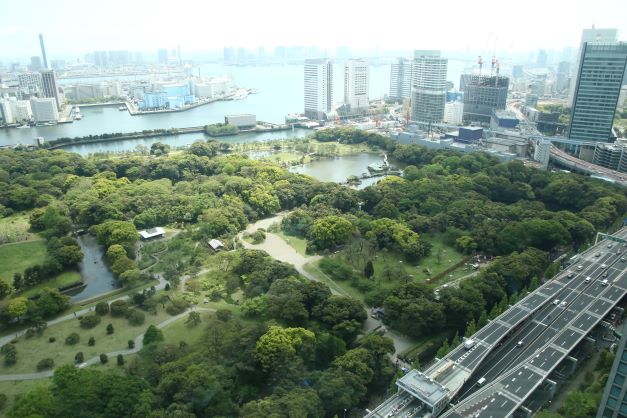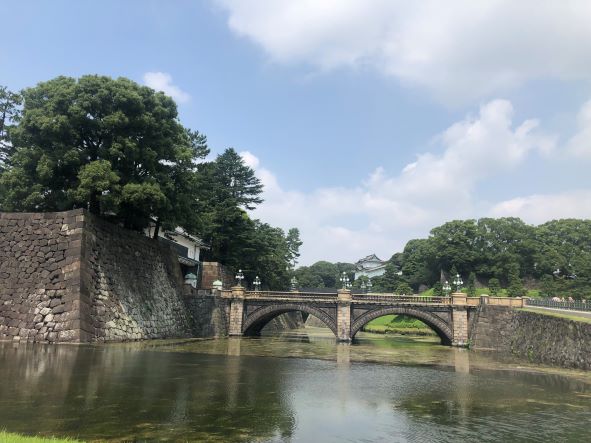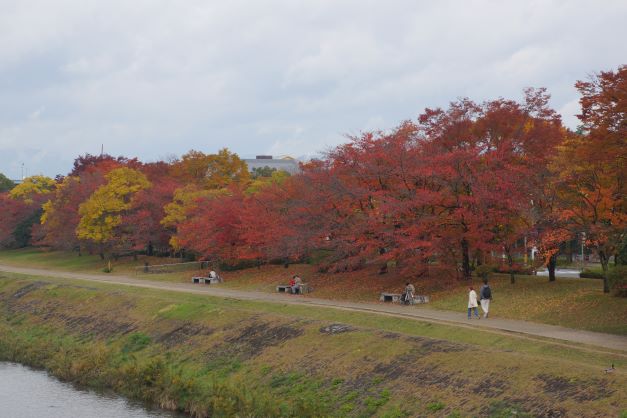Some of us at The J Team are longtime runners, and we are of the view that there are few better ways to explore a new place (and shake off jet lag!) than by lacing up our running shoes and heading out into the city (or countryside) to see the sights! In fact, one of us, on his first trip to Tokyo, over 30 years ago (!) turned down a beautifully green avenue, thinking it was the entrance to a public park. An agitated guard bolted from his hut to chase him down (well, to shout, because he was long past the age of chasing!) and we learned that there is no running permitted in Tokyo’s Meiji Shrine! Oops!
Since then, we have run up and down Mount Fuji; competed in the Tokyo Marathon; enjoyed local hospitality (fresh strawberries at one aid station, served up by players from a middle school baseball team, in uniform!) at other, more rural marathons (once, we won a delicious local melon for placing our age group!); struggled through one of Japan’s more famous ultramarathons (in which there were as many volunteers as competitors); and of course enjoyed scenic runs in many cities and rural settings.
Our usual strategy when we’re on the road is to figure out the distance we’d like to cover, then look at the map to see how far our fitness might take us. Alternatively, the fitness app Strava has a relatively new feature called Routes that offers suggestions from local athletes (or are they algorithmically generated???). One of our favorite Tokyo runs is across the Rainbow Bridge to Odaiba, north across the reclaimed islands of Harumi district, and back across Tsukiji Bridge, adjacent to Hama Rikyu Gardens (former aristocratic gardens built in the 17th century, and one of our favorite places in Tokyo!!!).
If you’re a runner staying in the Maranouchi business district near Tokyo Station, you’ll definitely want to make a few loops of the Imperial Palace, probably the best-known running route in Tokyo. A single loop is almost exactly 5km, and at the right time of day you may encounter one of Japan’s professional or university ekiden (long-distance relay) teams, probably jogging slowly, but don’t let that fool you!
In Kyoto, a favorite run is up the cycle path that runs alongside the Kamogawa River. Long distance runners can continue out of the city up into the hills, and those looking for a shorter loop might think about incorporating the extremely scenic 1.5km of Philosopher’s Walk into their route.
Northeast of (and overlooking) Kyoto is Mount Hiei, home to the Enryaku-ji temple, which is home to the “marathon monks”, who attempt to complete 100 30km loops of Mount Hiei on 100 consecutive nights, in pursuit of greater enlightenment. Those who complete the 100-day challenge may request permission to continue, attempting to complete an additional 900 laps over the next seven years. In summer, in winter, and in straw sandals. Fun!
Something we have often found valuable as we’ve explored Japan while wearing running shoes is the country’s wide-ranging train network.
In less than an hour, you can travel from Tokyo Station to the seaside town of Kamakura, which nearly a thousand years ago was the de facto capital of Japan. Kamakura is flat and compact; in a few hours, you jog past (and go into) many of the nearly town’s 100 Buddhist temples and Shinto shrines, some of which are over 1,200 years old. If you want to run long, the hills outside Kamakura feature wooded running trails that stretch into the surrounding communities of Zushi and Hayama.
Another great destination for Tokyo-based runners is Mount Takao, which is less than an hour by train from Shinjuku Station. Technically part of Tokyo City, Mount Takao is popular with hikers, but large enough that even with 2.5 million visitors annually, it never feels crowded. A particularly beautiful time of year for a run up and down the mountain is right now. Unsurprisingly, spring is another great time to visit.
Of course, as runners, we run. There are few sporting activities more portable, and we have rarely visited a country or city or town without lacing up our running shoes to explore. We bring our phones with us so we can snap photos, and because we’re older and slower than we used to be, we’re more willing to stop just about anywhere to take a souvenir photo.
One thing we are often asked by visitors who are interested in running in Japan is: “How safe is it?” Short answer: safer than almost anywhere else. And yet, while you will almost certainly never have an issue while out running in Japan, any time of night or day, a big part of never having an issue is knowing how to take care of yourself.
Here are a few suggestions that are valuable anywhere:
1. DON’T run wearing headphones in unfamiliar environments. They make you less aware of your surroundings and put you at greater risk of injury, accident or attack.
2. DO run with a partner if you can. In the worst-case scenario, one of you can run for help. More likely, a potential attacker will look for an easier mark.
3. DON’T be tempted to carry a pepper spray or stunning device with you for your own protection. In many places these are classified as prohibited weapons, and unless you are well-trained, it’s likely you won’t be able to use them successfully.
4. NEVER GET TRAPPED. If you find yourself alone in a dangerous situation, never back yourself into bushes, cliffs or other impenetrable obstacles. You’re a runner, and nearly all the time, running toward open ground will provide your best exit options.
5. USE A DISTRACTION. If you have to run for it, try to distract your attacker first. Pretend you are calling to someone behind the would-be-attacker; this can provide vital seconds of advantage in making an escape.
6. NEVER PERMIT PHYSICAL CONTACT. Keeping your distance from a would-be attacker is essential. Once physical contact has occurred, the probability of escape diminishes considerably.
7. CARRY A PHONE. Even just pulling out a phone in a sketchy situation may scare off a would-be attacker. And did you know you can call emergency services without even unlocking your phone?
8. If you feel you’d like to gain more confidence, TAKE A SELF-DEFENCE CLASS from a qualified instructor. However, in most situations the best advice is never to allow the assailant to make physical contact with you.
Yes, Japan is a very safe place, but of course the best way to avoid a dangerous situation is to never allow yourself to get into the situation in the first place. Use the guidelines above and in all likelihood, you’ll never have a problem.










